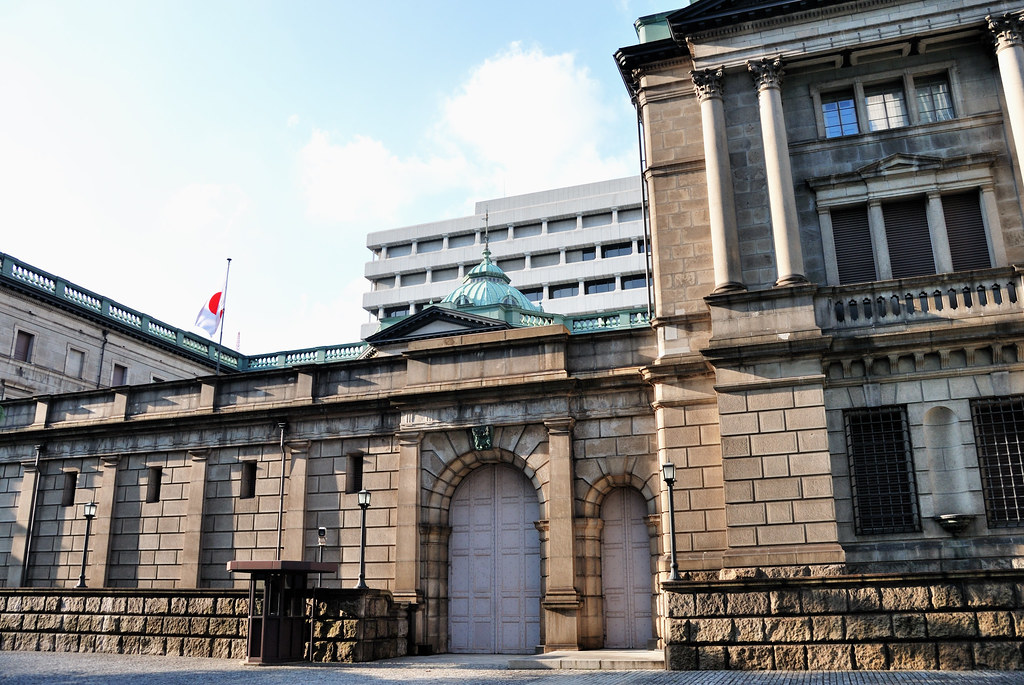Tokyo – On Friday, the Bank of Japan (BOJ) signaled its preparedness to raise borrowing costs later this year by keeping interest rates close to zero. Additionally, it released fresh predictions showing that inflation will remain close to its 2% target over the next three years.

Following its March guidance announcement, the central bank announced that it will continue purchasing government bonds. It pledged to purchase about 6 trillion yen ($38.45 billion) per month.
As widely expected, the BOJ maintained its short-term interest rate target at a range of 0-0.1%. This target was set just a month ago when the bank made a historical exit from its massive stimulus program.
“Trend inflation is expected to increase gradually” as a virtuous cycle of rising wage and price growth continues to strengthen, the BOJ said in a quarterly outlook report. The statement stated that “it is likely to be at a level that is generally consistent with the price target” in late 2025 or early 2026.
The decision crushed some outlandish expectations in the market that the BOJ may rise. Consequently, the yen dropped to a new 34-year low, falling past 156 to the dollar. Japan’s Nikkei stock average (.N225) gained more than 1% following the announcement.
In a quarterly outlook report made public following the meeting, the board predicted that core consumer inflation would reach 2.8% in the April-beginning year. It then forecasted a drop to 1.9% in the fiscal years 2025 and 2026.
The “core core” index, which does not account for fuel expenses, was predicted by the board to reach 1.9% in fiscal 2024 and 2025 before rising to 2.1% in 2026.
According to Naomi Fink, global strategist at Nikko Asset Management, “the forecast, very clearly in the upper 2% range, opens the way to future rate hikes given, of course, that the ‘virtuous circle’ stays intact.”
“The key to the ‘virtuous circle’ remains positive real wages, and higher-than-expected inflation would challenge this virtuous circle. Only in the event inflation is eating into real wages, this is an argument for greater central bank hawkishness,” she said.
The markets are watching for any clues from Governor Kazuo Ueda’s press conference following the meeting regarding how the weakening yen would impact when rates rise next. Additionally, they seek any information regarding the future of the BOJ’s bond-buying program.
Concerns among policymakers regarding the impact of growing living expenses on consumption have been exacerbated. Additionally, recent warnings of intervention by Japanese authorities have not been able to stop the yen’s decline versus the dollar to levels not seen since 1990.
The BOJ’s promises that it won’t boost rates swiftly after ending eight years of negative interest rates in March drive the yen’s declines. Additionally, the waning prospects of a short-term U.S. interest rate decrease contribute to this trend.
According to some analysts, Ueda may be under pressure to join the government in cautioning traders against depreciating the yen excessively.
Ueda suggests that if the BOJ begins to feel confident about pay gains spreading and encouraging businesses to raise service pricing, it may raise rates much more. This could initiate the cycle of rising wages and prices.
According to data issued on Friday, Tokyo core inflation, a leading predictor of national statistics, fell far more than anticipated in April. It fell below the BOJ’s 2% target. These highlighted uncertainties surrounding the pricing outlook.
According to some economists surveyed by Reuters, the next boost by the BOJ is expected to occur in the third quarter. However, others predict it will happen in October, December, or later.
Click here for more news on Finance and Investing.

